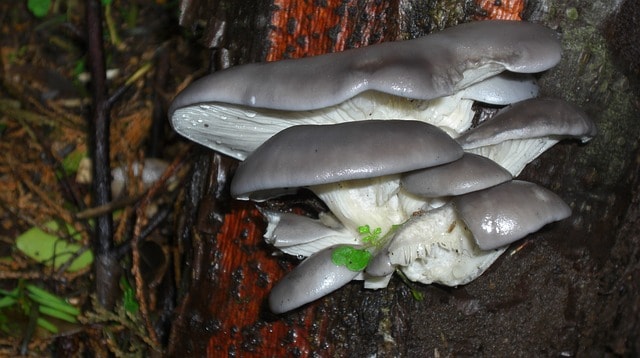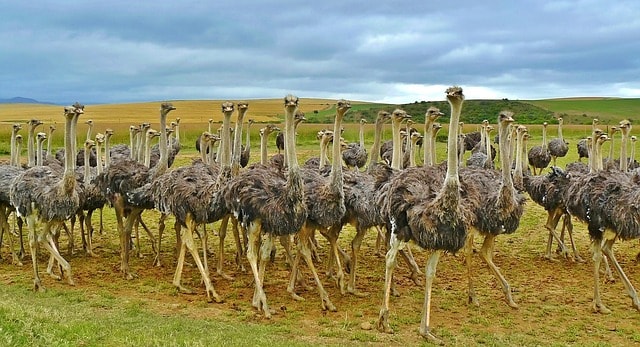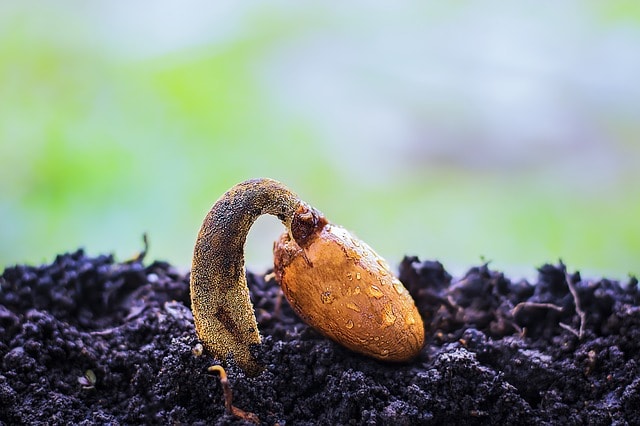Bee Farming Information For Beginners – Business Plan

Bee keeping is becoming a popular source of income in the modern world. Apiculture, as we call this business, requires little in the way of capital or manual labour. However, it does require knowledge and the ability to build a good bond with the honey bees in your safekeeping. If you want to start your own bee farming business then you have come to right place! Today, I will share important information in bee farming business for beginners.
Reasons for Starting a Bee Farm – Business Opportunity
Bees have many other uses, apart from producing honey. Below are some of the opportunities in this business.
- For instance, it is possible to collect bees’ wax from old combs and sell wax in the market. This wax is great for preparing excellent quality candles, waxes that reduce friction on surfboards and skis, lotions, etc.
- Surprisingly, bee venom is marvellous for relieving the symptoms of rheumatism, arthritis, etc. Of course, you will have to take the help of a professional to extract this venom with the aid of special equipment.
- Bees use a glue-like substance, known as Propolis, to keep the honeycomb intact. This plant resin is supposed to possess anaesthetic or antibiotic properties, which prove useful in the preparation of healing creams and healthy cosmetics.
- Bees collect pollen, as well as prepare royal jelly to use as food for larvae. These substances are utilised for preparing food additives, which prove useful for both, domestic animals and humans.
- Many people, living in non-European nations, consume young bees found in the brood comb of the hive, as a special kind of meat.
Create a business plan for your bee farming business and mention all the details including total expenses, selection of location for beekeeping. Also, do market research and find out the profit margin in all products mentioned above. Focus on producing products which have high profits in short run.
Ideal Location for Bee Farming
Bees are some of the most adaptable creatures belonging to the animal kingdom! They do not mind residing by your back door, on your terrace, on a rooftop, in a field, in fact, anywhere! There are no preferences regarding city or countryside, either! Nonetheless, you had better keep certain considerations in mind, when launching your bee farming business.
- Ensure that the site is dry, with no dampness around it.
- If the relative humidity (RH) level is high, it hampers bees from collecting honey. Note that they fly long distances.
- Humidity also prevents the efficacious ripening of nectar.
- Bees prefer cool and shady places with plenty of trees in the vicinity, wherein Mr. Wind will not disturb them too much!
- Whether you provide a natural or artificial source of water, it must be clean and hygienic. If you want high-quality honey, provide high-quality water.
- Place an old hive nearby, to make the bees realise that you are their ‘friend’. If you cannot obtain a natural hive, use wood to create an artificial one.
- Although bees do not mind how far they fly, in order to collect pollen, you might like to help them save energy. Towards this end, therefore, make sure that pollen-yielding plants are present in the vicinity. The bees will be able to prepare high-quality honey all that much faster!
- In case, you would like to move the hive, move it nearer to any yard, just at the beginning of the flowering season.
- Ensure that your bees have sufficient places to store the pollen they collect, as well as, the prepared honey.
Traditional vs. Modern Methods
Several places across the globe, still believe in the traditional method of collecting honey.
- Protecting self from bee stings via a cloth or thick mesh covering their heads and faces, a honey-collector takes down the honeycombs from tree stems, cracks in walls, roofs of houses, etc.
- Squeezing the comb or boiling it on a low fire, suffices to remove the honey from it.
- A clean cloth suffices as a filter for the honey.
However, this will not do for your bee farming business, as your honey may not be very clean in appearance, and will fetch low rates at the local markets. Therefore, go in for modern methods of honeybee farming, wherein you may raise your bees in well-ventilated, clean and low-cost wooden boxes.
Kinds of Hives Used in Bee Farming
Although there are all kinds of innovations under exploration across the globe, three kinds of hives are most popular.
- Top Bar Hive – It allows you to keep your bees at a convenient height. Comprising of a lone and long box, this hive goes in for individual frames, which substitute for a natural honeycomb. You will have to arrange around 24 wooden bars under the wide and lengthy roof of the box. Every bar must have a starter strip, which the bees will use for setting up the comb, albeit vertically. Even the bees love this stress-free and lightweight atmosphere!
- Langstroth – This type of hive has been present since 1852, when the Reverend L. L. Langstroth invented it! It is expansive and modular in design, wherein vertically hanging frames permit the bees to set up their honeycomb quite conveniently. There are spaces between the internal lining of the beehive and the frames. There is space between one frame and the next. The bees ensure that these bee spaces remain intact, without gluing them together. If you wish to, you may place additional boxes, all on top of one another. These additions are the supers. They may be shallow in depth, deep, or medium. Since the boxes have their standards, you may purchase them from stores, easily.
- Warre – Abbe Emile Warre, a French monk, designed the square boxes for this kind of hive. He felt that bees would flourish in a setting resembling the natural environment, such as a hollow tree. Unlike in the Langstroth hive, new boxes go below the existing ones. Of course, every box is light and small, making the shifting process quite easy. Then again, there are a series of slats, which span across the surface of each box. The bees ensure that their honeycomb hangs vertically downwards. The roof of the box has material, which is suitable for absorbing condensation, if any.
Apart from these, horizontal frame hives and rose hive come into play in the bee farming business.
- Horizontal Frames – They are mobile, rather than being fixed as in the Top Bar hives. The hive is reusable, even after collecting honey several times. It is easy to maintain.
- Rose Hive – It requires plenty of space, since the boxes are larger. Naturally, every box will need plenty of frames. Of course, it is possible to go on adding boxes, especially since the broods keep multiplying. The best advantage is the ability to remove all the honey at one time, instead of going about the collection process frame by frame.
Placing the Hive
It might interest you to know that there are three types of bees in the bee colony.
- The lone female, who is also highly fertile, is the Queen Bee.
- The Male Drones are in charge of the breeding processes, and present in large numbers.
- The Female Workers are the labourers, also present in large numbers.
Here are some information for positioning your beehive in the best way possible.
- Bees love waking up with the sun and foraging as early as possible. Therefore, let the hive face the southeast direction.
- Never allow direct sunlight to hit the hive, for ‘hot’ days will prove unbearable for the honeycomb. Instead of making honey, your bees will spend the majority of their time, trying to regulate the temperature inside the hive. Go for ‘dappled’ sunlight.
- Dark and deeply shadowed places are a big No-No too! You do not want your bees feeling listless in the damp atmosphere.
- Gullies and peaks of hills are not welcome, for the air is either too still or too windy. Just ensure that your hive has healthy ventilation.
- In case, winters are harsh in your region, create a windbreak at the rear. Alternatively, you may set up a fence. Use burlap sacks, wooden posts or bales of hay.
- The front of the beehive must be slightly lower (maybe, just an inch) than the rear. This is to ensure that rainwater (if it gets inside) drains out easily. You will not face this problem if you provide dry and firm land to your beehives.
- You must be able to reach your beehives easily, especially during the time of harvest. Otherwise, you will have difficulty in hauling pounds of honey back and forth!
Miscellaneous Tips
- Wasps, wax beetles, wax moths, a variety of mites, ants, birds, etc, tend to attack honeycombs. As a result, your bees may fall prey to all kinds of diseases. Request a horticulturist to help you keep your apiary free of diseases and pests.
- Equipment required for the bee farm, includes special tools for maintaining beehives; gloves, veils and coveralls, for protection; equipment for extracting honey; equipment for extracting bee venom; fuel and smokers; medications; food; transport; packaging materials; etc.
- A bee colony yields anywhere between 60 to 100 pounds or 28 to 46 kg, of honey annually, suggesting that you should be able to make handsome profits in this bee keeping business!
Your marketing strategies may include the setting up of a website, opting for public demonstrations, using social media, attending farmers’ markets, displaying your products at festivals and craft shows, etc.
FAQS
A bee farming business plan is a detailed document that outlines the process and procedures involved in starting and operating a bee farm. It includes information on the costs associated with beekeeping, the equipment and supplies needed, the expected income and profit margins, and the risks and challenges involved. The bee farming business plan should be reviewed and updated regularly to ensure that it reflects the latest information and developments in the industry.
There are a number of ways that a bee farming business plan can help you. It can provide you with a clear and concise roadmap for starting and running your business. It can help you identify your target market and your competition. Additionally, it can help you develop marketing and sales strategies, as well as set financial goals.
The bee farming business plan should include an executive summary, industry analysis, customer analysis, competitive analysis, and a marketing plan. The executive summary should include the company’s mission statement, company description, and company goals. The industry analysis should research the beekeeping industry and include information on the industry’s size, growth, trends, and key players. The customer analysis should identify the target market, customer needs, and how the company plans to meet those needs. The competitive analysis should research the company’s competitors and include information on their strengths and weaknesses. The marketing plan should include information on the company’s marketing mix, marketing strategies, and marketing budget.
The amount of time and money you spend on a bee farming business depends on the size and scope of your operation. A small, hobby-scale operation may only require a few hundred dollars and a few hours a week to maintain, while a large, commercial-scale operation could require tens of thousands of dollars and a full-time commitment.
The benefits of starting a bee farming business are numerous. Bee farming provides an opportunity to produce honey, which is a valuable commodity. Bee farming also allows for the production of beeswax, which has a variety of uses. Additionally, bee farming can help with the pollination of crops, which is essential for farmers.
There are several risks associated with bee farming businesses. These risks include:
• Poor bee health: Poor bee health can lead to lower honey yields, hive losses, and increased costs.
• Pests and diseases: Pests and diseases can cause honey production to decline and lead to hive losses.
• Weather: Extreme weather conditions can impact bee populations and honey production.
• Market conditions: Fluctuations in the honey market can impact prices and profitability.
There are a few key things to remember when starting a bee farming business:
1. Bee farming can be a profitable business, but it requires a significant investment of time and money.
2. Beekeeping is a complex process that involves many different steps, from selecting the right bees to keeping them healthy and happy.
3. The market for honey and other bee products is constantly changing, so it’s important to stay up-to-date on trends.
4.- It’s also important to have a good business plan in place to make sure your bee farming business is successful.
One common mistake that is made in bee farming businesses is not having a plan. This can lead to many problems, including not being able to generate enough income to sustain the business, not having enough bees to meet the demands of the market, and not having the proper equipment to care for the bees. Another mistake that is often made is not researching the local market to see what types of bees are in demand and how much they are worth. This can lead to selling the bees for less than they are worth or not being able to sell them at all.
To make your bee farming business successful, you will need to produce high-quality honey that meets the needs of your customers. You will also need to develop a good marketing strategy to attract customers and build a loyal customer base. Finally, you will need to manage your finances carefully to ensure that your business is profitable.
There are a few great resources to help you with your bee farming business. The first step is to reach out to your local beekeepers association. This is a great way to get started and learn about the ins and outs of keeping bees. There are also many great books available on the subject. A quick search on Amazon will yield many results. Finally, there are a number of online forums and websites dedicated to beekeeping. These can be a great way to ask questions and get advice from experienced beekeepers.






